

King Memorial
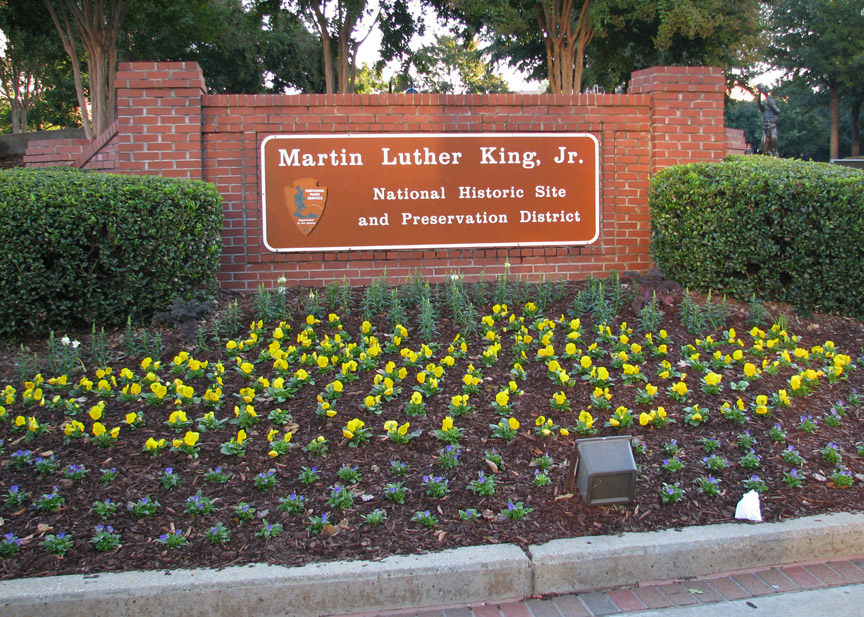
Martin Luther King, Jr. National Historic Site
Martin Luther King, Jr. National Historic Site established on October 10, 1980, consists of several buildings surrounding Martin Luther King, Jr.'s boyhood home on Auburn Avenue in the Sweet Auburn district of Atlanta, Georgia. Ebenezer Baptist Church, the church where King and his father Martin Luther King, Sr. pastored, is also part of the national historic site. These places are critical components in the interpretation of the life of Martin Luther King Jr. and his legacy as a leader of the American civil rights movement.
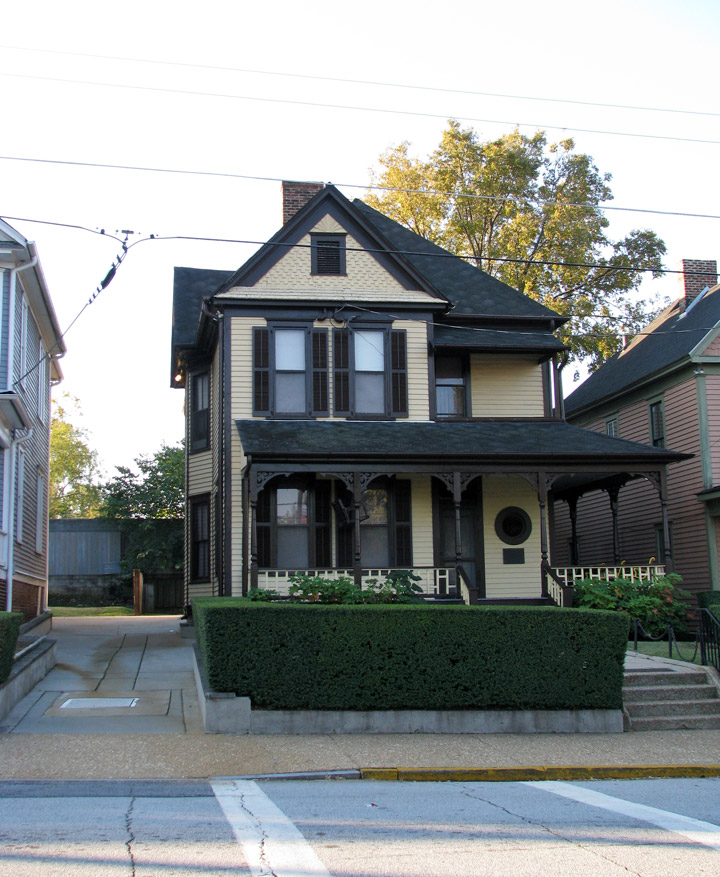
Martin Luther King, Jr. boyhood home
Photos of King's boyhood home and neighborhood
The area was designated a National Historic Landmark district on May 5, 1977. The site became a national historic site on October 10, 1980 and is administered by the National Park Service (NPS). In total, the buildings included in the site make up 35 acres (0.14 km˛). The visitor center contains a museum that chronicles the American Civil Rights Movement which follows the parallel paths of Dr. Martin Luther King, Jr.. A firehouse (Fire Station No. 6), built in 1894 served the Sweet Auburn community until 1991, now contains a gift shop and an exhibit on desegregation in the Atlanta Fire Department. The “I Have a Dream” International World Peace Rose Garden, and a memorial tribute to Mohandas K. Gandhi. Also of interest is the "International Civil Rights Walk of Fame" which gives recognition to those courageous pioneers who sacrificed and struggled to make equality a reality for all.
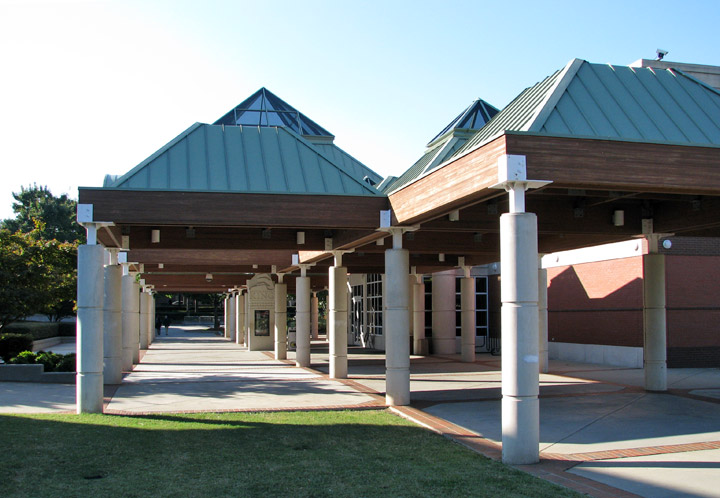
National Park Service Museum
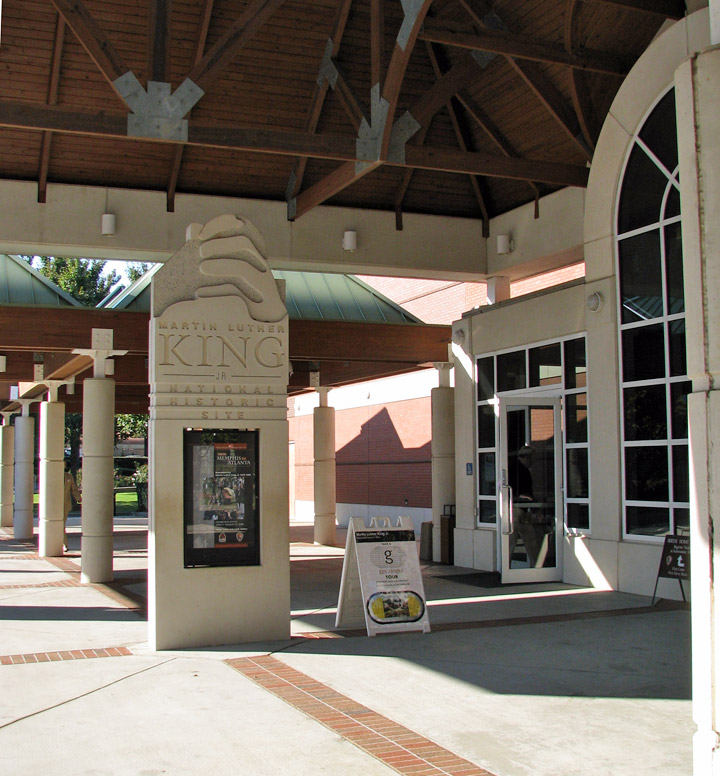
Annual events surrounding Martin Luther King, Jr. Day in January typically draw
large crowds. Speakers have included Presidents of the United States, national
and local politicians, and civil rights leaders. Remembrances are also held
during Black History Month (February), and the anniversary of King's April 4,
1968, assassination.
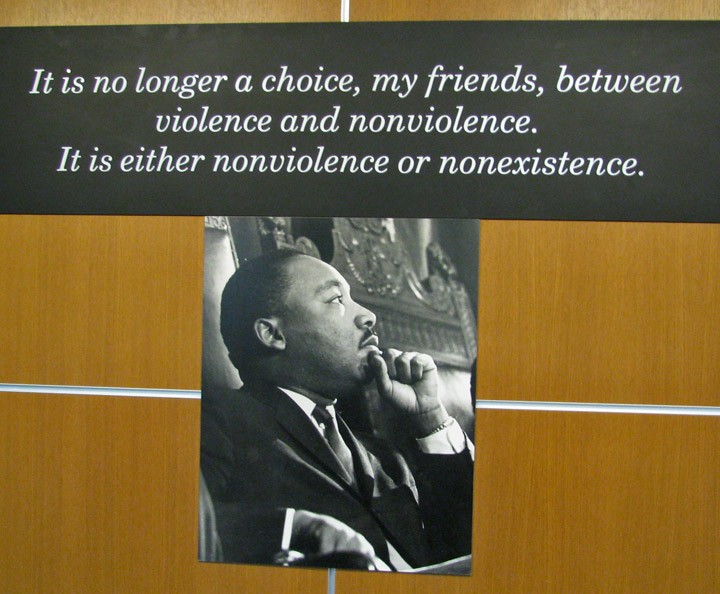
The King Birth Home is
located at 501 Auburn Avenue was built in 1895, about one block east of Ebenezer
Baptist Church in the National Historic Site. Martin’s maternal grandparents,
Reverend Adam Daniel (A.D.) Williams and Jennie Williams, bought the house for
$3,500 in 1909. A.D. Williams was pastor of the nearby Ebenezer Baptist Church.
When King's father married Alberta Williams, the family moved into the house in
1926. It is the place where Martin Luther King Jr. was born in 1929. The King
family lived in the house until 1941, and the house
was then converted into a two-family dwelling. The Rev. A.D. Williams King, Dr.
King's brother, lived on the second floor in the 1950s and early 1960s.

the walk
The first level includes the front porch, parlor, study, dining room, kitchen, laundry, bedroom and a bathroom. The second level includes four bedrooms and a bathroom. Free tours are led by the National Park Service rangers, and are available by reservation at the visitor center (tours begin at the fire station). The tours are filled on a first-come, first-served basis, strictly limited to 15 people per tour. Register for the tour at the National Park Service Visitor Center in person upon arrival to the park. They fill up fast on weekends and holidays.
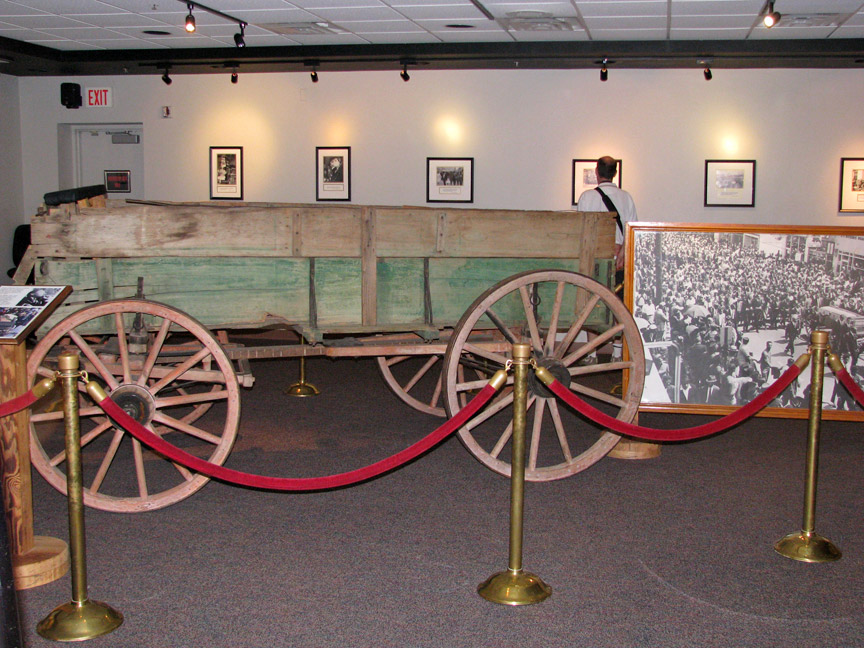
the wagon used to carry the coffin
in the funeral march
Ebenezer Baptist Church is a Gothic revival-style building located within the National Historic Site. In 1922, the congregation moved into this church on Auburn Avenue. Martin Luther King Sr. became pastor of Ebenezer Baptist Church in 1931, succeeding his father-in-law, A.D. Williams. Martin Jr., his eldest son, grew up attending services at Ebenezer, and succeeded his father and maternal grandfather as pastor in 1960. He remained in that position until his death in 1968.
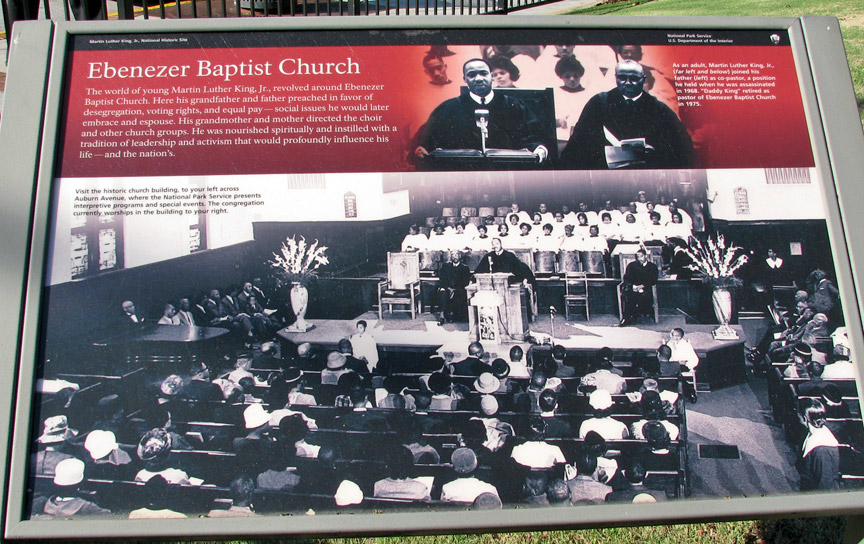
Photos of Ebenezer Baptist Church
Ebenezer was headquarters for the Southern Christian Leadership Conference where Martin worked as a civil rights leader. Many of the Civil Rights Movement’s mass meetings, rallies and strategy sessions were held in this historic sanctuary and fellowship hall. A number of Martin's great sermons were given at the church; "The American Dream" (July 4, 1965), "The Drum Major Instinct" (February 4, 1968), and "Unfulfilled Dreams" (March 3, 1968). As a final farewell to his spiritual home, Dr. King, Jr.'s funeral was held in the church.
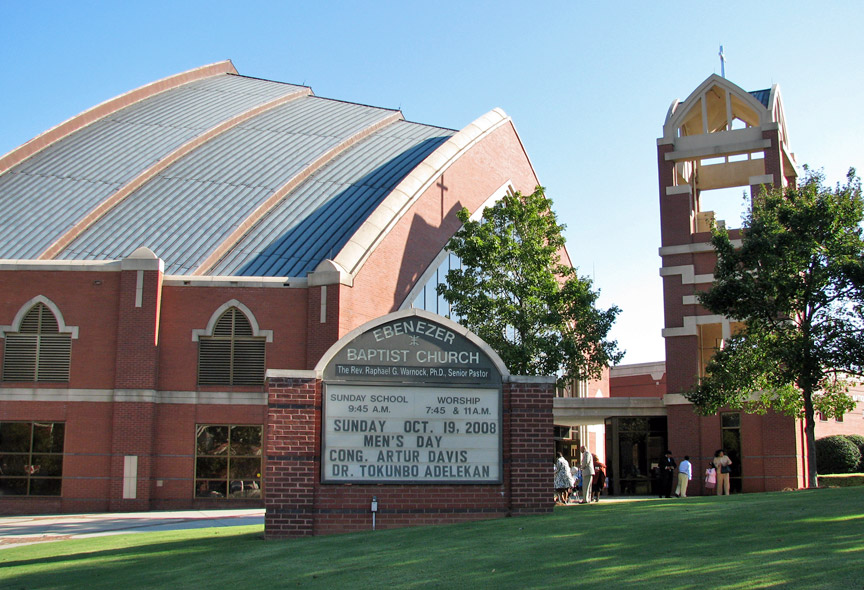
New Sanctuary of Ebenezer Baptist Church
The Baptist congregation moved to a new sanctuary across the street, the historic Ebenezer Baptist Church is open to the public for self-guided tours, and used occasionally for special services.
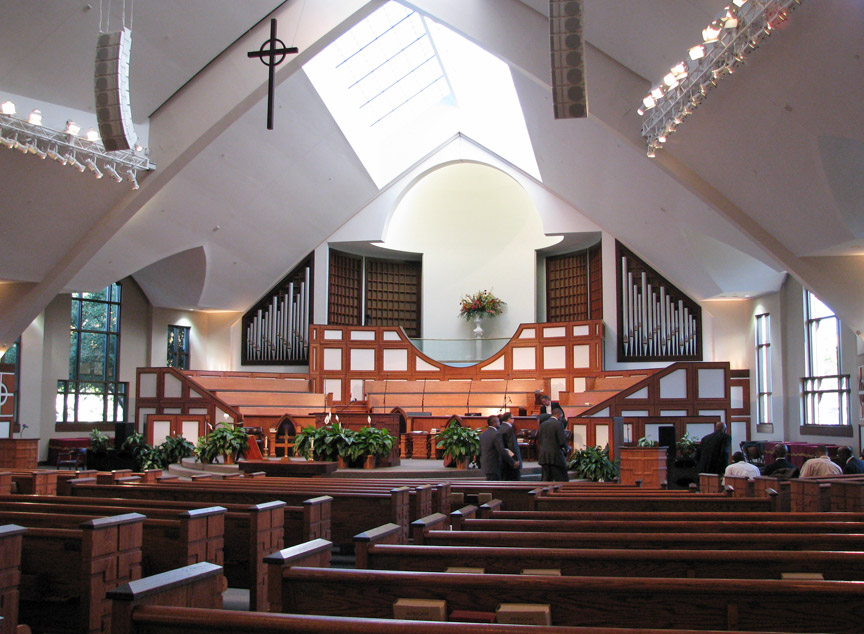
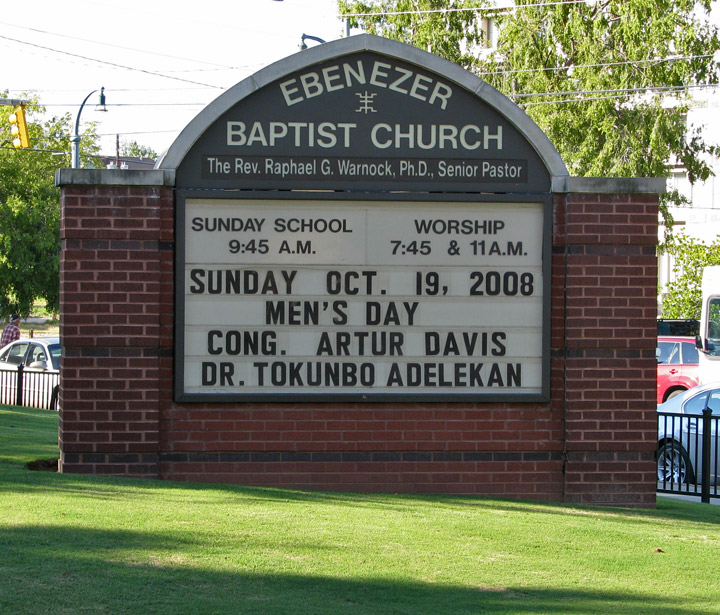
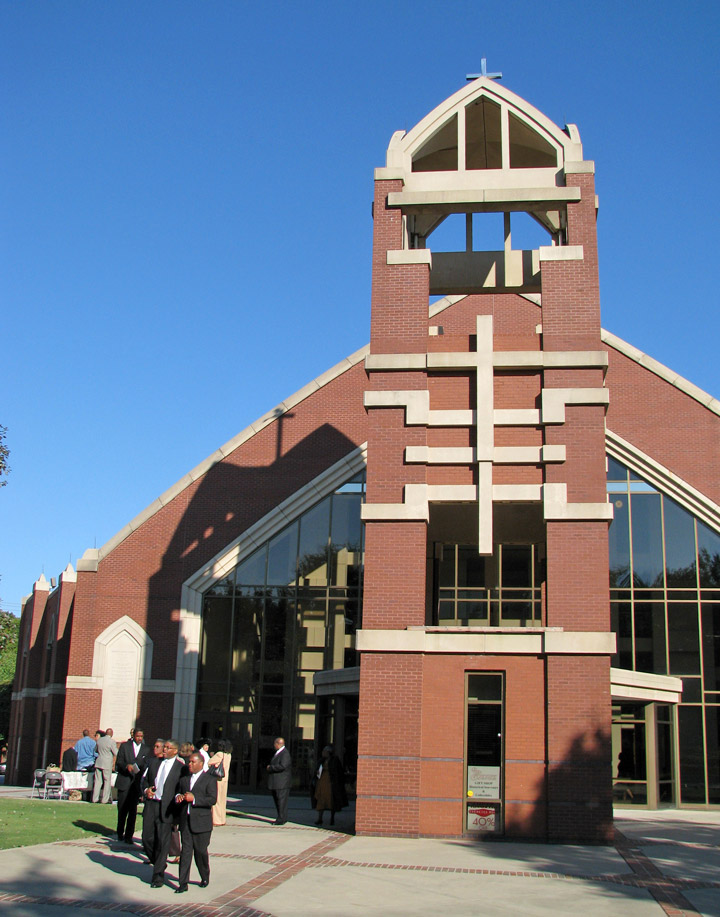
In 2001, thanks to a Save America's Treasures Grant and the contributions of
many individuals and corporations, the National Park Service began the
restoration. "Phase I" included design and installation of major systems
including, electrical, heating and air conditioning, and fire suppression.
Structural repairs were made to the roof system and the historic exterior
Ebenezer sign was repaired and lit for the first time since 1990. A chair lift
was installed to provide accessibility to the sanctuary. The funding for "Phase
I" involved a private and public partnership and cost $1,885,000. "Phase II" of
the project will restore the appearance of the sanctuary and fellowship hall to
the 1960-1968 period when Dr. King served as co-pastor with his father. Special
work items include preservation of stain glass windows; restoration/replication
of furnishings; repair of balcony structural system; rehabilitation of
restrooms; abatement of asbestos-containing flooring; treatment of termite
infestation/damage; installation of a lightning protection system; improvement
of site drainage; and restoration of a sidewalk, baptistery, and pipe organ and
its antiphonal.
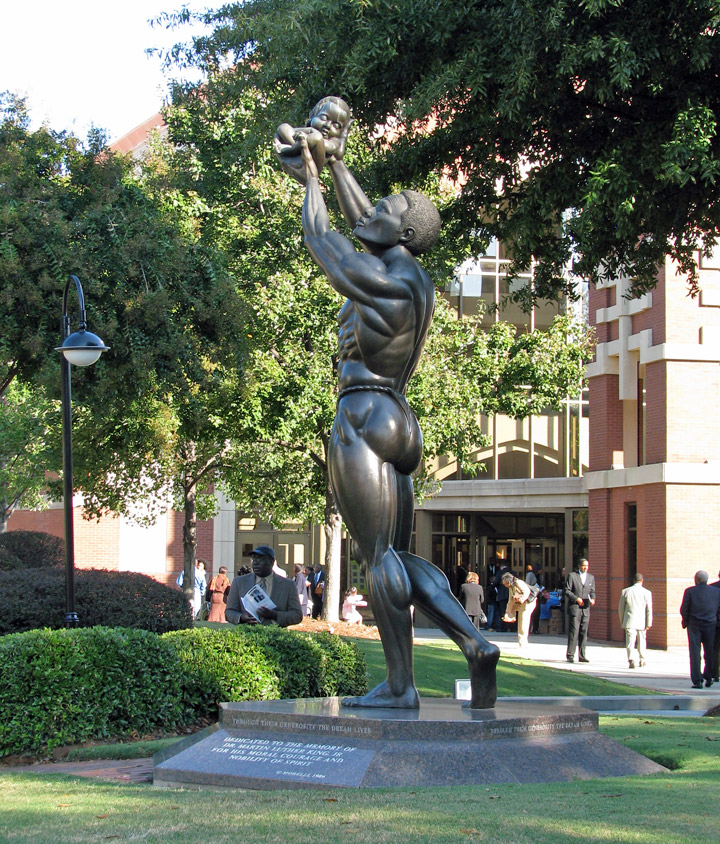

On September 10, 2007 Ebenezer was closed for at least a year to begin its
"Phase II" Restoration Project. "Phase II", an approximately $4 million,
federally funded project will focus on the church’s historical architecture and
cosmetic design. It will include a combination of restoration and preservation
treatments. When "Phase II" is completed visitors will be able to fully
experience the church that supported the family, spiritual and cultural
development of Reverend Dr. Martin Luther King, Jr. from the early age of five,
when he was baptized there, to his last days of thirty nine years on April 9,
1968.
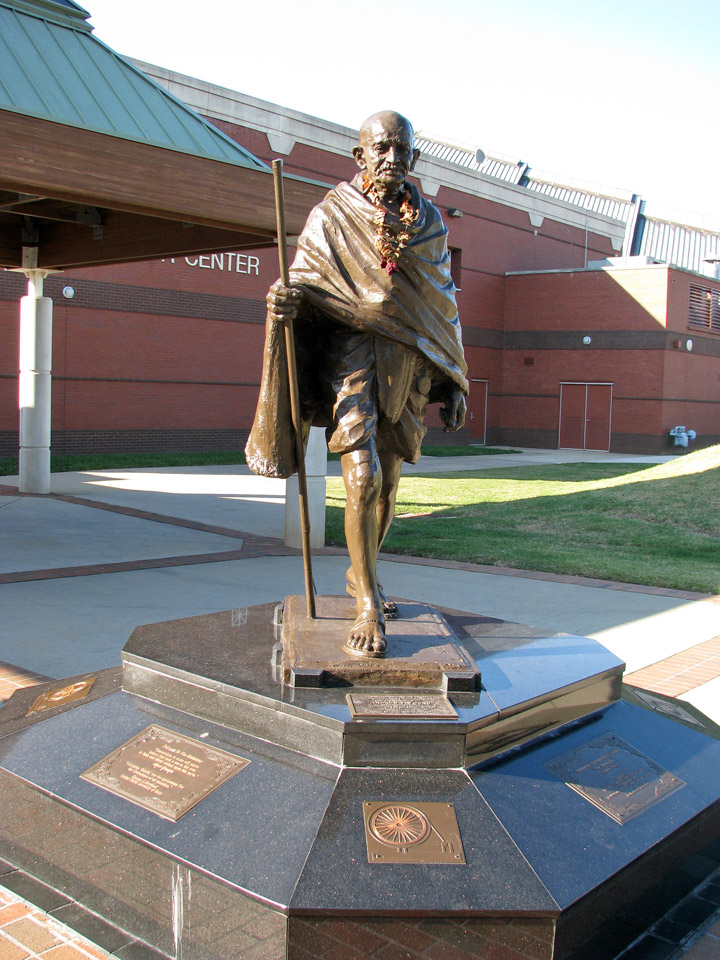
statue of Mohandas Karamchand Gandhi
The statue of Mohandas Karamchand Gandhi was donated by The Indian Council for Cultural Relations, India, in collaboration with The National Federation of Indian American Associations and The Embassy of India, USA.

International Civil Rights Walk of Fame
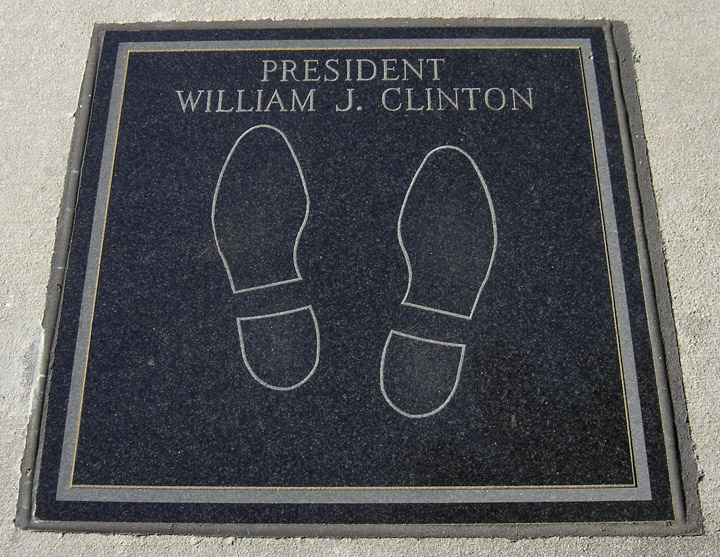
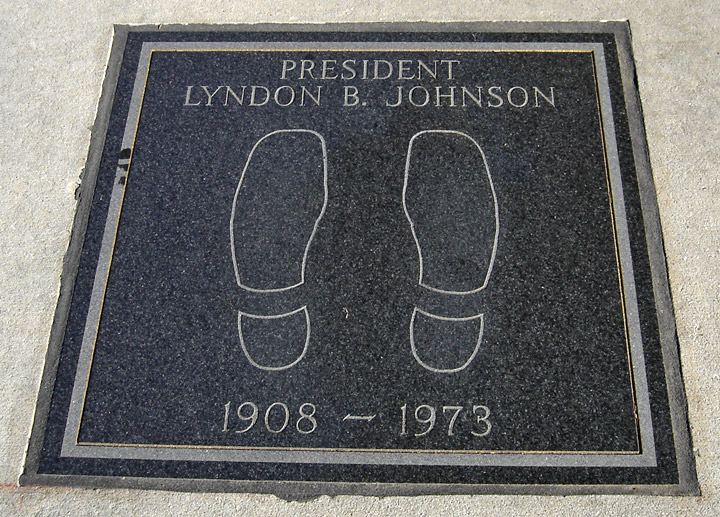
"Nonviolence, to be a potent force, must begin with the mind. Nonviolence of the
mere body without the cooperation of the mind is nonviolence of the weak of the
cowardly, and has, therefore, no potency. It is a degrading performance. If we
bear malice and hatred in our bosoms and pretend not to retaliate, it must
recoil upon us and lead to our destruction."--Gandhi
"Tribute to the Mahatma "Gandhi was inevitable. If humanity is to progress,
Gandhi is inescapable. He lived, thought and acted, inspired by the vision of
humanity evolving toward a world of peace and harmony. We may ignore him at our
own risk"--Martin Luther King, Jr.
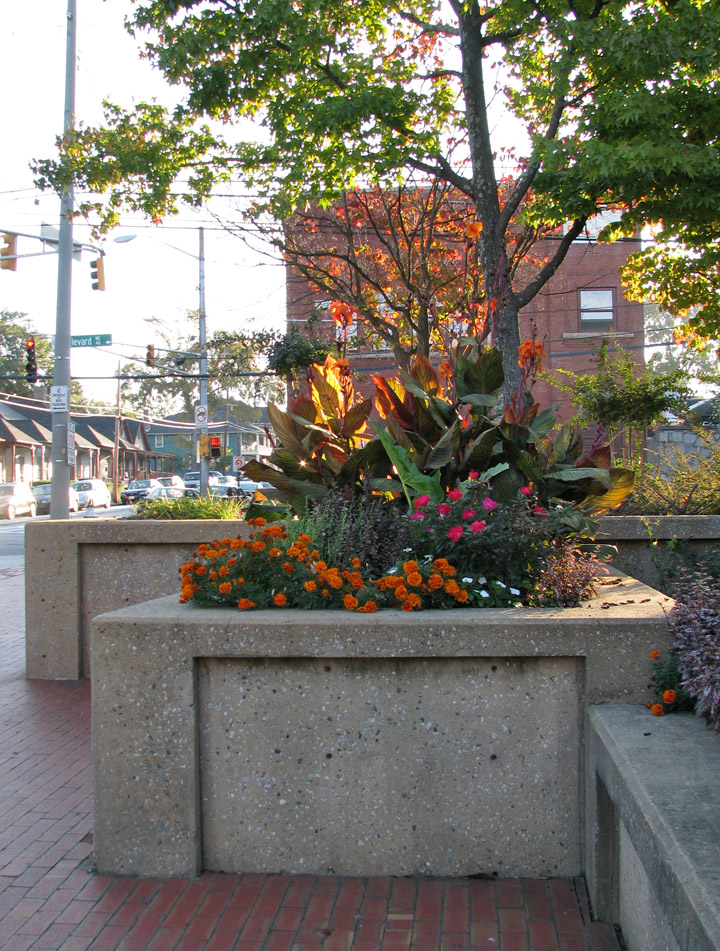
Coretta Scott King started the Martin Luther King Jr. Center for Nonviolent
Social Change in the basement of the couple's home in the year following King's
1968 assassination. In 1981, the center was moved into a multimillion dollar
facility on Auburn Avenue, near King's birth home and next to Ebenezer Baptist
Church, where he preached from 1960 until his death.
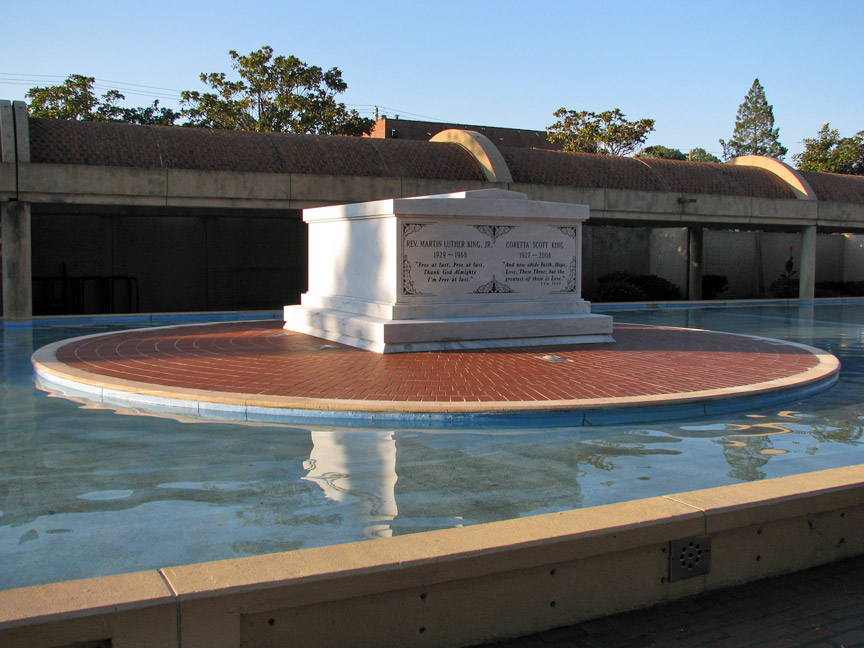
Martin Luther King Jr.'s gravesite
In 1977, a memorial tomb was dedicated, and the remains of Martin Luther King Jr. were moved from South View Cemetery to the plaza that is nestled between the center and the church. Martin Luther King Jr.'s gravesite and a reflecting pool are also located next to Freedom Hall. Mrs. King was interred with her husband on February 7, 2006.
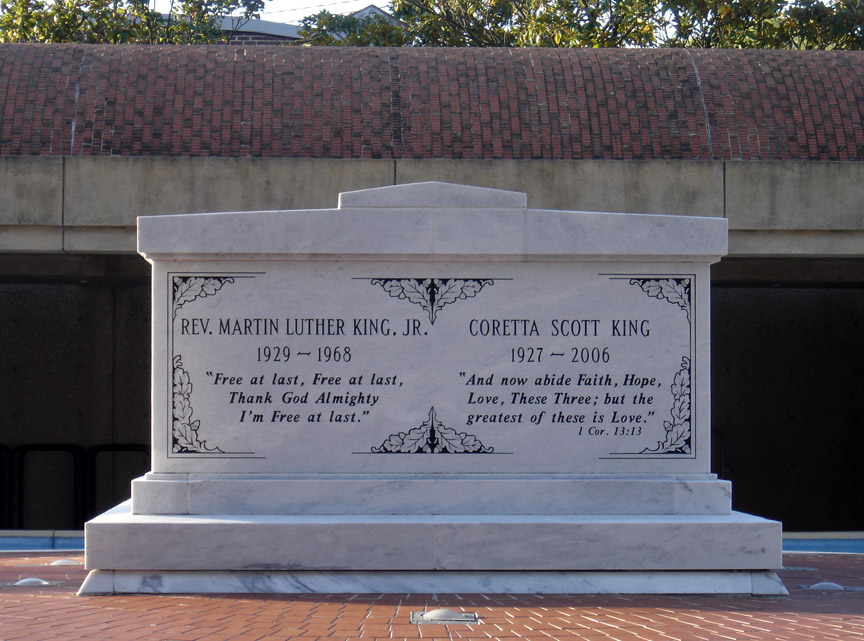
As of 2006, the King Center is a privately owned inholding within the authorized
boundaries of the national historic site. However, there is debate within the
King family on whether it should remain so or be sold to the National Park
Service.
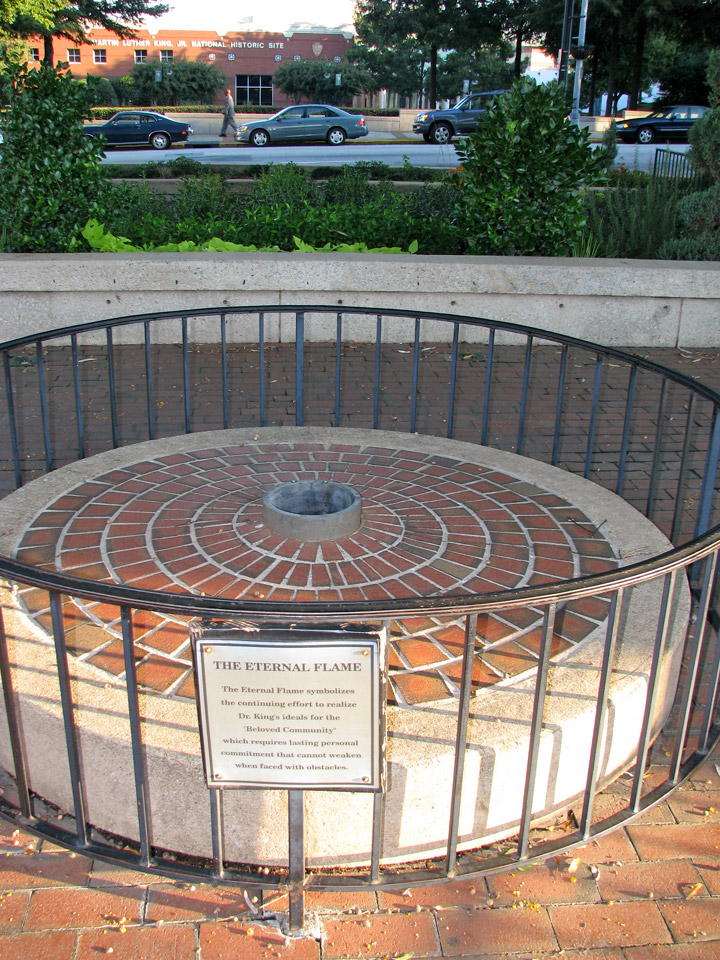
The Eternal Flame
The "International Civil Rights Walk of Fame" was created in 2004. The walk along the Promenade, includes footsteps, marked in granite and bronze. According to the National Park Service, the Walk of Fame was created to "pay homage to the "brave warriors" of justice who sacrificed and struggled to make equality a reality for all." The new addition to the area is expected to enhance the historic value of the area, enrich cultural heritage, and augment tourist attractions.


The “Walk of Fame” is the brain child of Xernona Clayton, founder and executive
producer of the renowned Trumpet Awards and a civil rights icon in her own
right. Ms. Clayton said, “This is a lasting memorial to those whose
contributions were testaments to the fact that human progress is neither
automatic nor inevitable. This historic site will serve as a symbol of pride and
a beacon of hope for all future generations. We are looking forward to building
a monument to the civil struggle that depicts every step taken toward the goal
of justice and the tireless exertions and passionate concern of these dedicated
individuals.”
Text from Wikipedia
Photos from the Life of Martin Luther King, Jr.
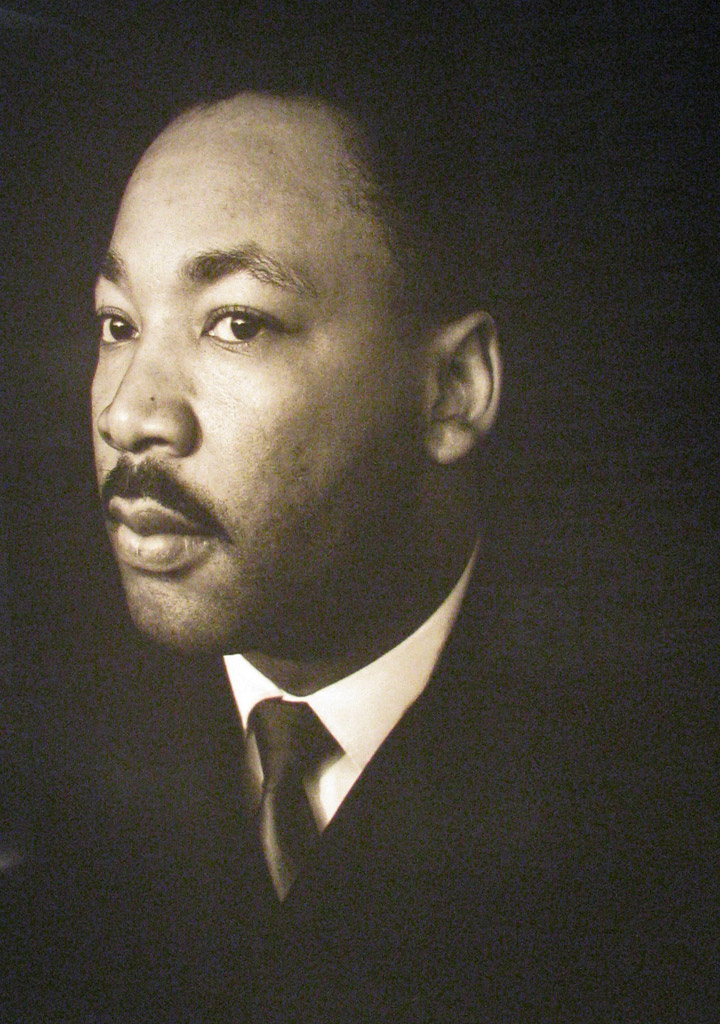
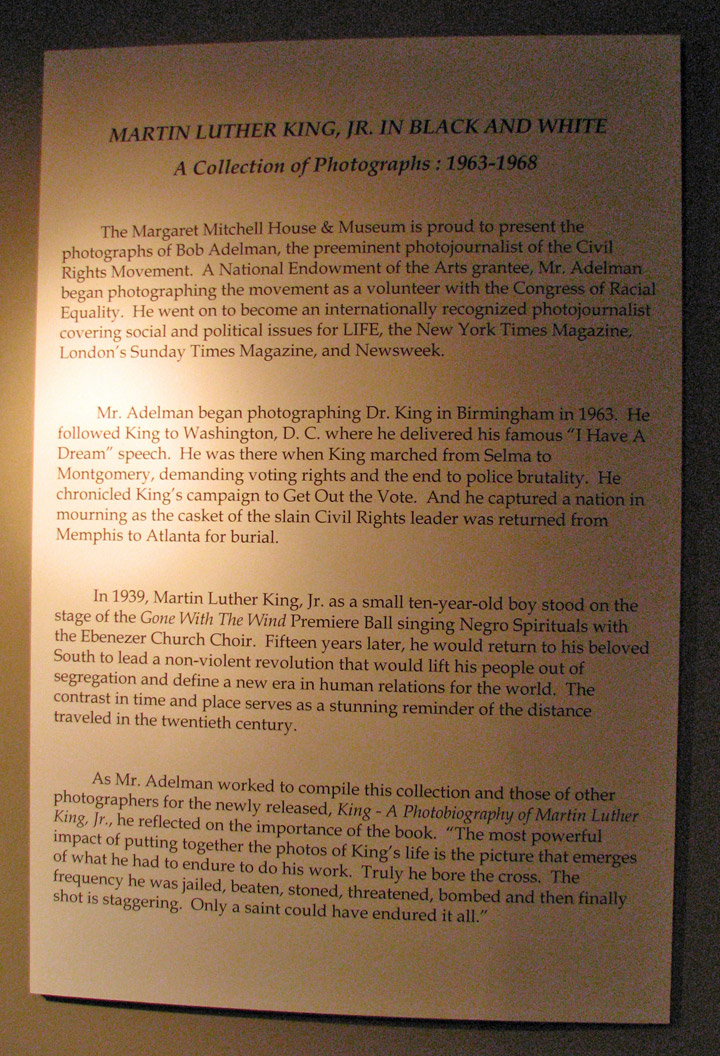
by Mr. Adelman
displayed at the
Margaret Mitchell House and
Museum
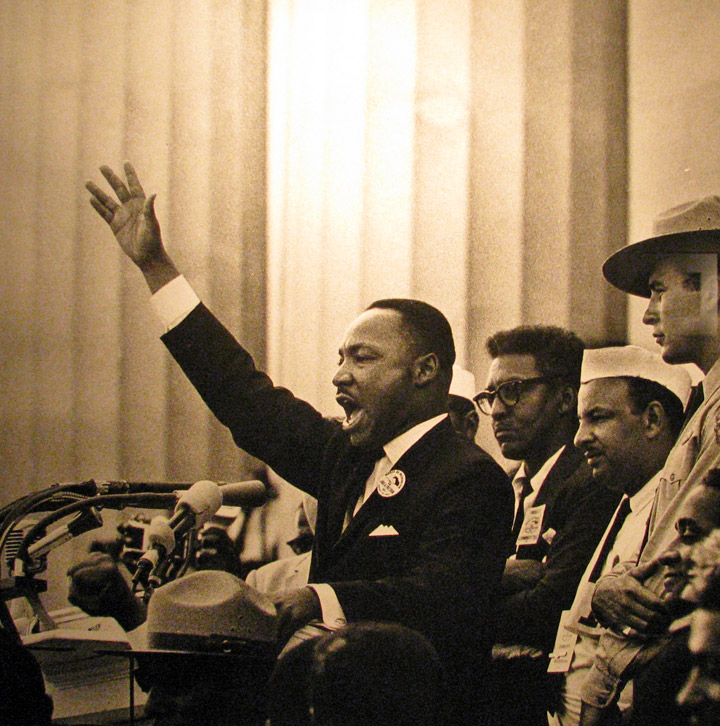
"I have a Dream" speech
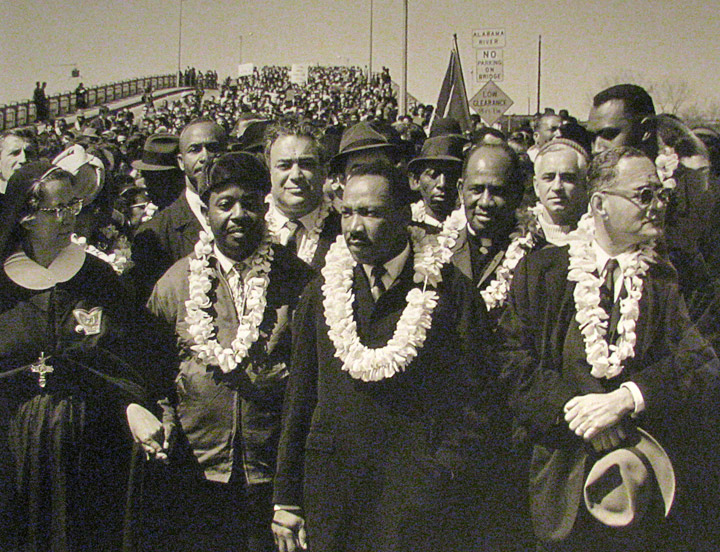
Montgomery 1965
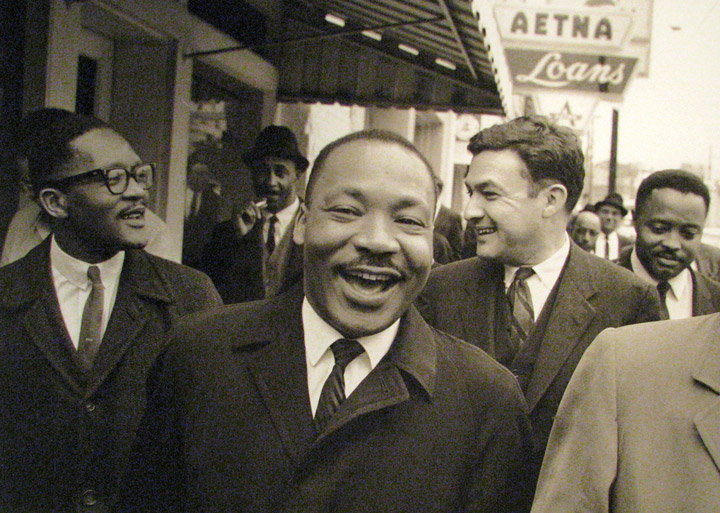
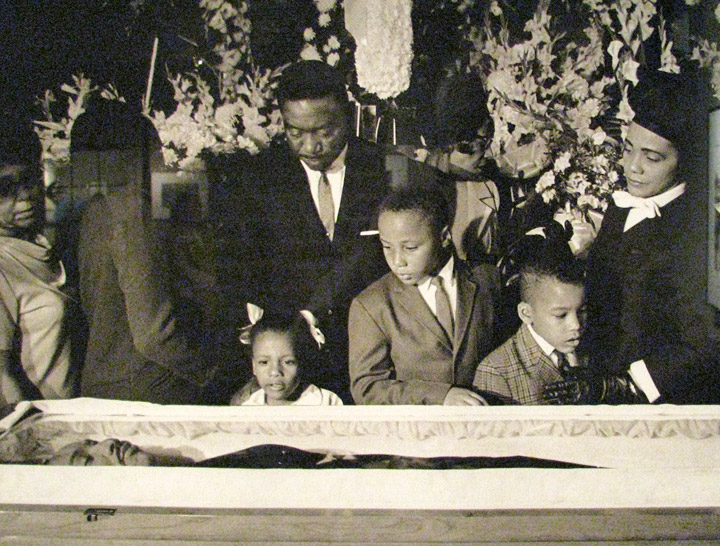
viewing the body
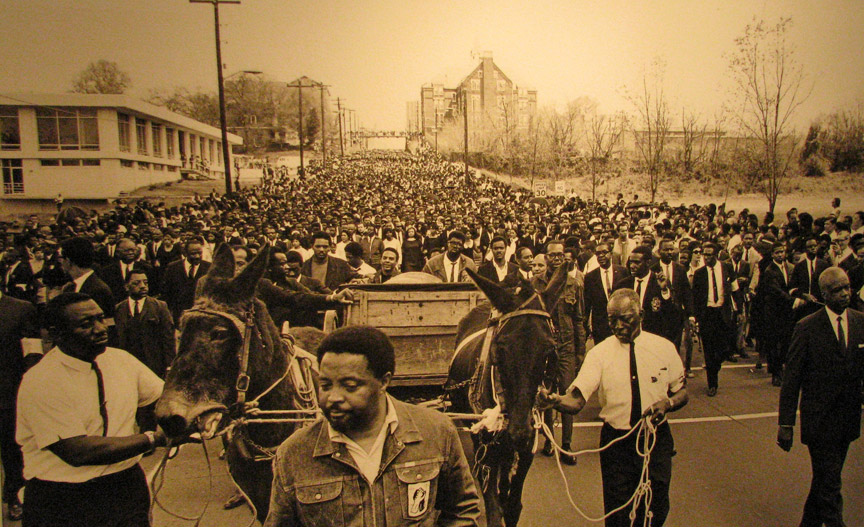
the funeral procession